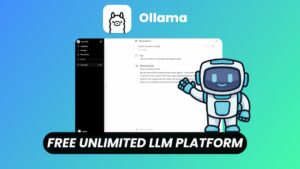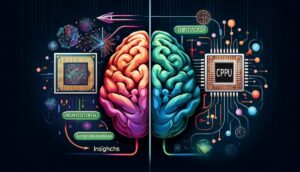In the dynamic landscape of modern software development and deployment, efficiency, portability, and scalability are paramount. As applications become increasingly complex and the demand for rapid iteration and deployment cycles intensifies, traditional deployment methods often fall short. This is particularly true in the realm of machine learning (ML) and Artificial Intelligence (AI), where models are constantly evolving, dependencies can be intricate, and the need for consistent execution across diverse environments is critical.
Enter Docker, a revolutionary platform that has fundamentally transformed how we package, distribute, and run applications. By leveraging containerization technology, Docker encapsulates an application and all its dependencies into a self-contained unit called a container. This container can then be run consistently across any environment that supports Docker, eliminating the dreaded “it works on my machine” syndrome and simplifying the deployment pipeline.
Sponsored
Building upon the foundation of Docker, the concept of a Docker Model Runner emerges as a powerful paradigm for deploying and serving machine learning models in a scalable, reliable, and portable manner. A Docker Model Runner essentially packages a trained machine learning model, its associated dependencies (libraries, frameworks, data preprocessing scripts), and the necessary serving logic into a Docker container. This container can then be easily deployed to various infrastructure platforms, from local development environments to cloud-based production clusters, ensuring consistent model execution and simplifying the complexities of model deployment and management.
The Challenges of Traditional Model Deployment
Before delving into the intricacies and benefits of Docker Model Runners, it’s crucial to understand the challenges associated with traditional methods of deploying machine learning models:
- Dependency Hell: Machine learning projects often rely on a complex web of libraries and frameworks (e.g., TensorFlow, PyTorch, scikit-learn), each with its own specific version requirements and potential conflicts. Managing these dependencies across different environments can be a nightmare, leading to inconsistencies and deployment failures.
- Environment Inconsistencies: Discrepancies between development, testing, and production environments can introduce subtle bugs and unexpected behavior in deployed models. Differences in operating systems, system libraries, and installed packages can lead to significant headaches and debugging efforts.
- Scalability Issues: Traditionally deployed models might struggle to handle fluctuating traffic or increasing computational demands. Scaling the underlying infrastructure and ensuring efficient resource utilization can be complex and time-consuming.
- Deployment Complexity: The process of deploying a machine learning model can involve multiple steps, including setting up serving infrastructure, configuring web servers, managing API endpoints, and ensuring model versioning. This complexity can slow down the deployment cycle and increase the risk of errors.
- Reproducibility: Ensuring that a deployed model can be reliably reproduced in different environments or at a later point in time can be challenging without meticulous tracking of dependencies and configurations.
- Management and Monitoring: Once a model is deployed, ongoing management, monitoring of performance metrics, and handling updates or rollbacks can be complex and require specialized tools and expertise.
Docker to the Rescue: Containerization for Machine Learning
Docker provides an elegant solution to many of these challenges by introducing the concept of containerization. A Docker container packages an application and its entire runtime environment – including code, libraries, system tools, runtime, and settings – into an isolated and portable unit. This container operates consistently regardless of the underlying host operating system or infrastructure.
For machine learning model deployment, Docker offers several key advantages:
- Dependency Isolation: Each model and its specific dependencies can be packaged into a separate Docker container, eliminating dependency conflicts and ensuring consistent execution.
- Environment Consistency: Docker containers provide a consistent runtime environment across all stages of the development and deployment pipeline, from the data scientist’s workstation to the production server.
- Portability: Docker containers are highly portable and can be easily moved and run on any Docker-enabled infrastructure, whether it’s a local machine, a virtual machine, or a cloud service.
- Reproducibility: Dockerfiles, which define how a Docker image is built, provide a clear and reproducible recipe for creating the container environment, ensuring consistency across deployments.
- Simplified Deployment: Docker simplifies the deployment process by packaging everything needed to run the model into a single container, which can be easily deployed and managed using Docker tools.
- Scalability: Docker containers can be easily scaled horizontally by running multiple instances of the same container to handle increased traffic or computational demands. Container orchestration platforms like Docker Swarm and Kubernetes further automate the scaling and management of containerized applications.
The Anatomy of a Docker Model Runner
A typical Docker Model Runner setup involves the following key components:
- Trained Machine Learning Model: This is the core artifact – the trained model file (e.g., a
.h5file for TensorFlow/Keras, a.pthfile for PyTorch, or a.pklfile for scikit-learn). - Model Serving Logic: This is the code that loads the trained model, preprocesses incoming data, performs inference using the model, and formats the output. This logic is often implemented using web frameworks like Flask or FastAPI in Python, which provide APIs for interacting with the model.
- Dependencies: A list of all the necessary libraries, frameworks, and other software packages required to run the model and the serving logic (e.g., TensorFlow, PyTorch, scikit-learn, NumPy, Pandas, Flask, Uvicorn). These dependencies are typically specified in a requirements file (e.g.,
requirements.txtfor Python). - Dockerfile: This is a text file that contains a series of instructions for building a Docker image. It specifies the base operating system, installs the necessary dependencies, copies the model files and serving logic into the image, and defines how the container should be run.
- Docker Image: This is a lightweight, standalone, and executable package that includes everything needed to run the Docker Model Runner application: the code, runtime, libraries, environment variables, and configuration files.
- Docker Container: This is a runtime instance of a Docker image. You can run one or more containers from a single Docker image.
Building a Docker Model Runner: A Step-by-Step Guide (Conceptual)
While the specific implementation details will vary depending on the chosen machine learning framework and serving logic, the general process of building a Docker Model Runner involves the following steps:
- Develop and Train the Machine Learning Model: Train your machine learning model using your preferred framework and save the trained model artifacts.
- Implement the Model Serving Logic: Write the Python code (or code in another suitable language) that will load the trained model and expose it via an API endpoint. This code should handle data preprocessing, model inference, and response formatting. For example, using Flask:
from flask import Flask, request, jsonify
import joblib
import numpy as np
app = Flask(__name__)
model = joblib.load('your_model.pkl') # Load your trained model
@app.route('/predict', methods=['POST'])
def predict():
try:
data = request.get_json()
features = np.array(data['features']).reshape(1, -1)
prediction = model.predict(features).tolist()
return jsonify({'prediction': prediction})
except Exception as e:
return jsonify({'error': str(e)}), 400
if __name__ == '__main__':
app.run(debug=True, host='0.0.0.0', port=5000)- Create a
requirements.txtFile: List all the Python dependencies required to run your serving logic and the machine learning framework:
flask
joblib
numpy
scikit-learn- Write the
Dockerfile: Define the steps to build the Docker image:
# Use an official Python runtime as a parent image
FROM python:3.9-slim-buster
# Set the working directory in the container
WORKDIR /app
# Copy the requirements file into the container at /app
COPY requirements.txt ./
# Install Python dependencies
RUN pip install -r requirements.txt
# Copy the model file and serving script into the container at /app
COPY your_model.pkl ./
COPY app.py ./
# Expose the port that the Flask application listens on
EXPOSE 5000
# Define the command to run the Flask application
CMD ["python", "app.py"]- Build the Docker Image: Navigate to the directory containing your
Dockerfile, model file, serving script, andrequirements.txtand run the following Docker command:
docker build -t my-model-runner- Run the Docker Container: Once the image is built, you can run a container from it:
docker run -p 5000:5000 my-model-runner This command runs a container from the my-model-runner image and maps port 5000 on your host machine to port 5000 inside the container, allowing you to access the model serving API.
Benefits of Using Docker Model Runners
Employing Docker Model Runners for deploying machine learning models offers a multitude of advantages:
- Consistent Deployments: Ensures that the model runs identically across different environments, eliminating environment-related issues.
- Simplified Management: Packages the model and its dependencies into a single unit, making it easier to manage and deploy.
- Scalability: Docker containers can be easily scaled horizontally using container orchestration tools to handle varying workloads.
- Portability: Enables seamless deployment of models to various infrastructure platforms without code modifications.
- Reproducibility: Dockerfiles provide a clear and auditable way to build the deployment environment, ensuring reproducibility.
- Faster Deployment Cycles: Streamlines the deployment process, allowing for quicker iteration and release of new model versions.
- Resource Efficiency: Docker containers are lightweight and share the host operating system’s kernel, leading to efficient resource utilization compared to traditional virtual machines.
- Isolation: Provides isolation between different model deployments, preventing interference and ensuring stability.
- Integration with DevOps Workflows: Seamlessly integrates with existing DevOps tools and practices for continuous integration and continuous deployment (CI/CD).
Advanced Considerations and Tools
Beyond the basic setup, several advanced considerations and tools can further enhance the capabilities of Docker Model Runners:
- Container Orchestration (Kubernetes, Docker Swarm): For production deployments requiring high availability, scalability, and automated management, container orchestration platforms like Kubernetes and Docker Swarm are essential. These platforms automate the deployment, scaling, and management of multiple Docker containers.
- Model Serving Frameworks (TensorFlow Serving, TorchServe, MLflow Serving): Frameworks like TensorFlow Serving, TorchServe, and MLflow Serving are specifically designed for serving machine learning models at scale. They often provide features like model versioning, A/B testing, and monitoring capabilities and can be easily containerized with Docker.
- CI/CD Pipelines: Integrating Docker Model Runner builds into CI/CD pipelines automates the process of building, testing, and deploying new model versions whenever changes are made to the code or model artifacts.
- Monitoring and Logging: Implementing robust monitoring and logging mechanisms for Dockerized model serving applications is crucial for tracking performance, identifying issues, and ensuring the health of the deployed models. Tools like Prometheus, Grafana, and Elasticsearch/Kibana can be used for this purpose.
- Security: Securing Docker containers and the model serving application is paramount. This includes practices like using minimal base images, regularly updating dependencies, implementing network policies, and using security scanning tools.
- GPU Support: For computationally intensive models, Docker can be configured to leverage GPU resources on the host machine, accelerating inference times. This often requires installing NVIDIA Container Toolkit.
Conclusion: Embracing Containerization for Robust Model Deployment
Docker Model Runners represent a powerful and essential paradigm for deploying and serving machine learning models in the modern era. By leveraging the benefits of containerization, they address the inherent challenges of traditional model deployment, offering consistency, portability, scalability, and simplified management. As the adoption of machine learning continues to grow across various industries, the ability to efficiently and reliably deploy models at scale will become increasingly critical. Docker provides the foundational technology, and the concept of the Docker Model Runner offers a practical and robust approach to unleashing the power of containers for building scalable and portable AI-powered applications. Embracing this approach is key for organizations looking to accelerate their AI initiatives and realize the full potential of their machine learning models in real-world applications.



